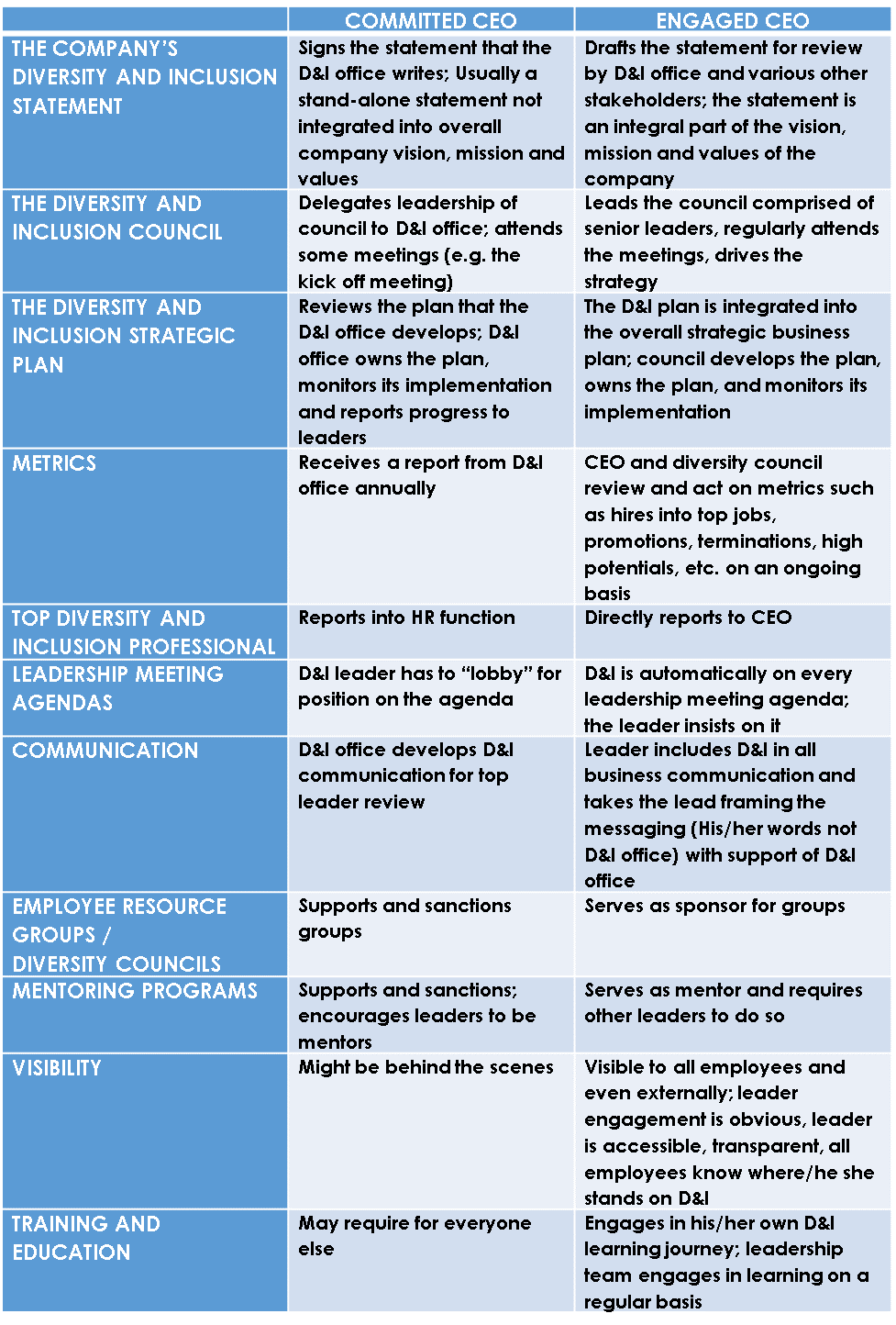
Last week, we introduced a new series for this month where we’ll be exploring the conditions necessary for diversity and inclusion programs to be successful and sustainable. As more and more organizations begin to develop an increased understanding of the business case behind this work and embark on their own journey, we see this conversation has become critically important.
Today we explore, what is perhaps, one of the most critical requisites to a successful diversity and inclusion strategy. In our experience with clients of varying sizes, industries, and sectors, one thing has been constant among organizations that are successful: senior leaders were engaged. Now, that doesn’t necessarily mean leadership started off engaged. In fact, in most cases, they were not. However, securing that engagement was (and should be) a primary area of focus in any D&I strategy.
Likewise, the Global Diversity & Inclusion Benchmarks (GDIB), a model that organizations use to assess the programmatic state of their D&I efforts, classifies Leadership & Accountability as a foundational element to D&I strategy. Organizations that are progressive in their efforts or demonstrate best practice, can usually attest to the following conditions:
| Level 4: Progressive | Level 5: Best Practice |
| ☐ 2.1 A large majority of employees across an array of diversity dimensions rate their leaders as treating them fairly and inclusively.
☐ 2.2 Management performance, pay, bonuses, and promotions are tied to a variety of D&I indicators. ☐ 2.3 Leaders are seen as change agents and role models and inspire others to take individual responsibility and become role models themselves. ☐ 2.4 Leaders and board members publicly support internal and external diversity-related initiatives, even if they are perceived to be controversial. ☐ 2.5 Leaders and board members understand that D&I is systemic. They are fully committed to holding people at all levels accountable for achieving the D&I objectives. |
☐ 2.6 Leaders are involved in D&I initiatives, communicate the D&I strategy, and provide recognition for D&I champions and advocates.
☐ 2.7 Leaders hold themselves and others responsible for achieving the D&I goals and objectives. ☐ 2.8 The board of directors is diverse, is engaged in D&I issues, and holds the leadership team accountable for achieving the D&I strategy. ☐ 2.9 Managing D&I is an essential leadership competency and leaders are rated on it. |
| (Source: Global Diversity & Inclusion Benchmarks, Diversity Collegium) |
So, what does it mean to be engaged? In a previous post, Mary-Frances Winters defines engagement as: the ongoing enthusiastic involvement that harnesses discretionary effort. Engagement is action now.” Senior Leaders, especially the CEO, need to be engaged, actively involved, and committed to taking action in order for the organization’s D&I strategy to succeed. How do we get there?
- The necessity of a clear and concise business case cannot be overstated. Prior to embarking on a D&I strategy, focus on identifying specific metrics that qualify D&I as a business imperative, and quantify the ROI of increased focus. Consider leveraging predictive workforce analytics and market data. In sum, learn and speak in the language of your business leaders.
- Education & Learning. Start with senior leadership when engaging in D&I learning and education. We have seen the most success within organizations where learning opportunities were piloted with a select group of leaders. Those leaders had the influence and power to ultimately champion subsequent efforts.
- Relationships & Access. Build relationships across the business and among the leadership team. In doing so, identify your potential allies and dissenters. Leverage these relationships as a medium of influence and access.
- Give Examples. Many leaders and organizations espouse to being committed to and engaged in efforts to create an inclusive workplace, but few may know exactly what that looks like and means. Explore how other organizations have been successful in their efforts and identify best practices ascribed to engaged leaders. Consider the below table as a start.



















